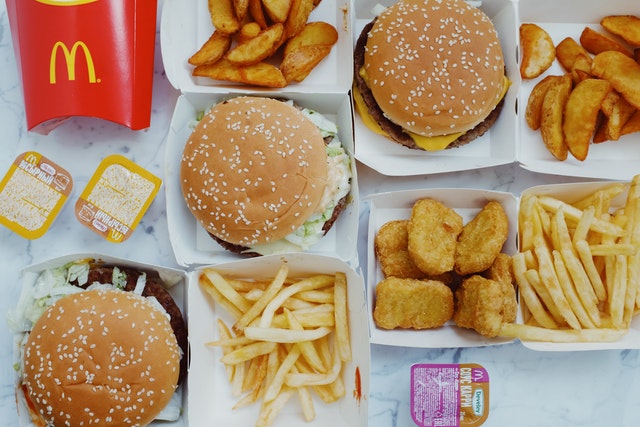Despite increasing pressure from consumers, health experts and environmental NGO’s, a recent report by Mind the Store and Toxic-Free Future has found major US fast-food chains are still serving some of the countries favourite takeaway foods packed in PFAS.

The study looked at 38 items collected from McDonalds, Burger King, Wendy’s, Sweetgreen, Cava and Freshii, from multiple stores across three different US states. And we’re not off the hook here in the UK either. Their results found packaging from some of our own favourite’s, such as Burger King’s Whopper and McDonald’s Big Mac, containing PFAS.
In line with Fidra’s previous report, ‘Forever Chemicals in the Food Aisle’, this study highlighted both paper bags, such as those used for cookies, fries and chicken nuggets, and moulded fibre containers marketed as compostable, as key items likely to have PFAS added.
A fixable problem
Not all food is packed in PFAS. While at least one item was found from each fast-food chain tested, the chains were also using some packaging for fried foods that came out as PFAS-free. Paperboard cartons or clamshells for fries and chicken nuggets came back with PFAS levels below the screening value, and Sweetgreen recently announced they are phasing out PFAS from their bowls, replacing them with PFAS-free versions by the end of 2020. In fact, 67% of the packaging tested from burger chains was PFAS-free. So what about the other 23%?
Over a million Big Mac boxes are used and thrown away every day. While the burger is bought, eaten and forgotten, and the packaging slowly degraded, the PFAS it contains can remain in our environment for 1000’s of years. With PFAS linked to increased risk for certain cancers, immune system suppression and fertility issue, and causing widespread harm to our wildlife populations, Safer Chemicals and their Mind the Store campaign are asking everyone to take action. Their new campaign ‘We’re not lovin’ it’, is asking people worldwide to write to McDonalds, the world’s top fast food chain, asking them to go PFAS-free.
Lots more information can be found on the Safer Chemicals, Healthy Families website, including more on what they tested, what they’re doing now and how you can get involved.
And don’t forget to follow @FidraTweets to keep up to date on what we’re doing to prevent PFAS pollution here in the UK.
Dr Kerry Dinsmore (kerry.dinsmore@fidra.org.uk)

